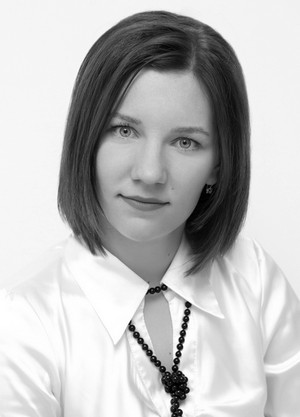Effect of rhythmic workloads on coherent communication being formed in cerebral structures and on heart rate variability
Фотографии:
ˑ:
Teoriya i praktika fizicheskoy kultury №10 2016, pp. 83-85
UDC 796.01:61
Yu.G. Kalinnikova1
Associate Professor, PhD E.S. Inozemtseva1
Professor, Dr. Sc. Psych. E.V. Galazhinskiy1
Professor, Dr. Med. L.V. Kapilevich1
1National Research Tomsk State University, Tomsk
e-mail: kapil@yandex.ru
Objective of the study was to explore the effects of rhythmic workloads on the intra-hemispheric coherent communication formation process and on the heart rate control variability. Subject to the study were 30 young women of 17-20 years of age. The coherent communication was tested by a computerized Neuron-Spectrum Electroencephalograph System (made by NeuroSoft Research and Production Company based in Ivanovo, Russia).
The study showed that the low-frequency rhythmic workloads are associated with the intra-hemispheric short coherent communications being desynchronized, whilst the higher-frequency movements were found to help synchronize the cerebral electric activity. These changes were found to affect the heart rate control system, with the growing movement frequency being of strengthening effect on the autonomous control mechanism. We assume that the specific effects of different physical activity on the cortical processes are basically due to bioelectric activity patterns with variable coherence rates being formed in the cortex, the patterns being able to modulate the centralization level of the vegetative system control mechanisms.
Keywords: heart rate variability, spectral analysis, coherency, rhythmic workload, electroencephalographic indices, EEG rhythms.
References
- Balanev D.Yu., Kapilevich L.V., Shil'ko V.G. Perspektivy primeneniya metodov monitoringa dvigatelnoy aktivnosti cheloveka v sporte [Perspectives of Application of Motor Activity Monitoring Techniques in Sport]. Teoriya i praktika fiz. kultury, 2015, no. 1, pp. 58-60.
- Kabachkova A.V., Lalaeva G.S., Zakharova A.N., Kapilevich L.V. Vliyanie urovnya dvigatel'noy aktivnosti na prostranstvennoe raspredelenie alfa-ritma elektroentsefalogrammy [EEG alpha rhythm spatial distribution depending on level of motor activity]. Teoriya i praktika fiz. kultury, 2016, no.2, pp. 83-85.
- Kalinnikova Yu.G., Inozemtseva E.S., Kapilevich L.V. Vliyanie ritmo-tempovoy struktury na psikhofiziologicheskie kharakteristiki pri zanyatiyakh aerobikoy [The Effect of Different Rhythm and Tempo of Aerobics Classes on Psychophysiological and Electroneuromyographic Characteristics]. Teoriya i praktika fiz. kultury, 2014, no.9, pp. 98-101.
- Kalinnikova Yu.G., Inozemtseva E.S., Galazhinskiy E.V., Balanev D.Y., Kapilevich L.V. Kogerentny analiz EEG pri fizicheskikh nagruzkakh i zvukovom soprovozhdenii razlichnoy ritmo-tempovoy struktury [EEG coherence analysis at physical loads and sound accompaniment of different rhythm-tempo structure]. Teoriya i praktika fiz. kultury, 2015, no.11, pp. 36-38.
- Kalinnikova Yu.G., Inozemtseva E.S., Galazhinskiy E.V., Balanev D.Y., Kapilevich L.V. Vliyanie fizicheskikh nagruzok i muzykal'nogo soprovozhdeniya razlichnoy ritmo-tempovoy strukturoy na bioelektricheskuyu aktivnost' golovnogo mozga [Effect of exercise and sound accompaniment with different rhythm and tempo on brain bioelectrical activity]. Teoriya i praktika fiz. kultury, 2015, no. 7, pp. 5-7.
- Koshel'skaya E.V., Kapilevich L.V., Bazhenov V.N. Fiziologicheskie i biomekhanicheskie kharakteristiki tekhniki udarno-tselevykh deystviy futbolistov [Physiological and biomechanical characteristics of targeted kicking technique of football players]. Bulletin of Experimental Biology and Medicine, 2012, vol. 153, no.2, pp. 235-237.
- Lalaeva G.S., Zakharova A.N., Kabachkova A.V. Vliyanie urovnya dvigatel'noy aktivnosti na prostranstvennoe raspredelenie teta-ritma elektroentsefalogrammy [Effect of level of motor activity on spatial distribution of EEG theta rhythm]. Novosibirsk State Pedagogical University Bulletin, 2016, no.1 (29), pp. 141-148.
- Potovskaya E.S., Kabachkova A.V., Shil'ko V.G. Primenenie analiza variabel'nosti serdechnogo ritma dlya otsenki funktsional'nogo sostoyaniya organizma studentok [Analysis of heart rate variability to assess functional state of female students: application features]. Tomsk State University Bulletin, 2011, no.346, pp. 140-143.
Received 05.07.2016 г.



 Журнал "THEORY AND PRACTICE
Журнал "THEORY AND PRACTICE